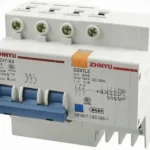Imagine a world where our day-to-day chats, midnight binge-watching, and office emails all come to a halt. Well, that genuinely sounds scary, don’t you think? And the thing is, this is actually a possibility without the twisted pair of cables. It can cross your mind “What is so special about a bunch of wires twisted together?” But believe it or not, these cables are the workhorses of our communication infrastructure. They might not get the limelight, but they sure do an important job. There are a lot of things where these twisted pair cables truly shine, but yeah, they are not without their drawbacks. And that is precisely what we are on to today with this in-depth post on the lowdown of both the advantages and disadvantages of twisted pair cables. So if this is a topic that intrigues you, we’d advise you to keep on reading. Here we go.
What Is a Twisted Pair Cable?

Imagine a couple of long, insulated copper wires just chilling side by side. Now, picture them being twisted together. Congrats, you’ve just visualized a twisted pair of cables! One of these wires has the job of data transmission while the other hangs out as a ground reference. The cool thing about these twisty duos is how they shield against crosstalk, signal interference, and that annoying electrical noise that can mess up the communication of adjacent wire pairs. Now, there are a couple of siblings in the twisted pair cable family, the Unshielded Twisted Pair (UTP) and the Shielded Twisted Pair (STP). The UTP is the more economical member of the family, choosing to go without any protective shield. This makes it more affordable but also more prone to electromagnetic interference. That’s the stuff that can create noise in your signals. The STP, on the other hand, is the protective older brother. It’s got a shielding layer that offers high resistance to interference. The downside? Well, you get what you pay for, and this higher protection comes with a higher price tag.
Advantages Of Twisted Pair Cable
Who wouldn’t want a cable that’s both versatile and durable, while not burning a hole in your pocket? That’s where the star of our show, the twisted pair of cables, makes its entrance. Let’s break down some of the awesome benefits these little guys bring to the table.
1. Easy on the Pocket and a Breeze to Install:
First off, one of the biggest perks of twisted pair cables is that they’re both budget-friendly and super easy to set up. This dynamic duo of affordability and simplicity makes them the ideal choice for folks who want to keep things efficient and uncomplicated. So, if you’re the type who likes to stretch your dollar while not pulling your hair out over complicated setups, these cables have got you covered.
2. Versatility is the Name of the Game:
One moment they’re zipping digital data across, and in the next, they’re smoothly carrying analog signals. This ability to switch between digital and analog data is just another feather in the cap of twisted pair cables, boosting their versatility. Whether you’re a hardcore tech geek or a casual user, the wide-ranging functionality of these cables will certainly appeal to you.
3. Short Distance Data Transmission:
These cables deliver impressive performance, reliably sending data across without a hitch. So, if you’re setting up a small home network or a compact office setup, these cables won’t let you down.
4. Super Reliable:
Suppose, you’re in the middle of an important project, and suddenly, a part of your cable gets damaged. Well, that sure sounds like a nightmare scenario, right? Not with twisted pair cables, it isn’t. These cables are usually built to withstand damage. If a portion gets injured, it won’t bring your whole network crashing down. The rest of the network will chug along just fine, making these cables a resilient choice for your data transmission needs.
5. Light and Flexible:
When you’re installing cables, the last thing you need is a heavy, rigid cable that refuses to go where you want it to. That’s where twisted pair cables come into play with their lightweight nature and flexibility. They’re incredibly easy to handle and install, bending and twisting to fit your needs. Who knew cables could be so accommodating?
6. Little To No Maintenance:
Let’s be honest, nobody likes complicated maintenance routines, especially when it comes to cables. With twisted pair cables, you can breathe a sigh of relief. They’re relatively easy to maintain and don’t require complex procedures or special tools. This simplicity enhances their appeal, making them the go-to choice for hassle-free usage and maintenance.
Disadvantages Of Twisted Pair Cable
Let’s take a fresh approach to unpack some of the not-so-rosy aspects of twisted pair cables. These cables do pack a punch, but just like anything else, they aren’t perfect. So, here’s the lowdown:
1. The Noise Problem:
Imagine you’re trying to convey your message to your friend right next to a blasting speaker. You lean in, but you can barely make out what they’re saying. That’s exactly what happens with twisted pair cables, especially the unshielded ones (aka UTPs) when they encounter electromagnetic interference or noise. The data they’re trying to transmit gets garbled, and the original signal gets distorted.
2. Not Good For Long Distance Data Transmission:
Over short distances, these cables perform admirably, but when you need to cover a longer distance, the signal begins to falter and distort. It’s like trying to shout a message to a buddy who’s way down the street; eventually, your message will get lost in the wind. That’s the case with twisted pair cables.
3. Limited Bandwidth:
Bandwidth is like a highway for data, and the more lanes you have, the more data you can send at once. Unfortunately, twisted pair cables are more like a country road than a six-lane freeway. Compared to other cable types twisted pair cables just can’t handle a high volume of data at the same time.
4. Security Vulnerabilities:
As much as we’d love them to be super secure, twisted pair cables are prone to eavesdropping and other sneaky security attacks. It’s a bit like having a conversation in a public place; there’s always a chance someone could overhear. This poses some potential security risks, especially if the data being transmitted is sensitive.
5. Slower Speed Over Longer Distances:
When it comes to transmitting data over longer distances, twisted pair cables kind of hit a speed bump. Their data transmission rates tend to slow down.
6. High Attenuation:
‘Attenuation’ is just a fancy word that means the weakening of a signal over distance or due to interference. Think of it like trying to use your phone when you’re far away from a cell tower; your signal gets weaker and weaker. Similarly, twisted pair cables have a higher attenuation compared to other types. This means that the further the data has to travel (or the more interference there is), the more the signal can degrade.
Conclusion
That should be enough. Now you know what’s the deal with the twisted pair of cables, don’t you? Next time, when you know the twisted pair cables are in use, you’ll automatically begin to appreciate their advantages and you will already be aware of the drawback that these cables have.

